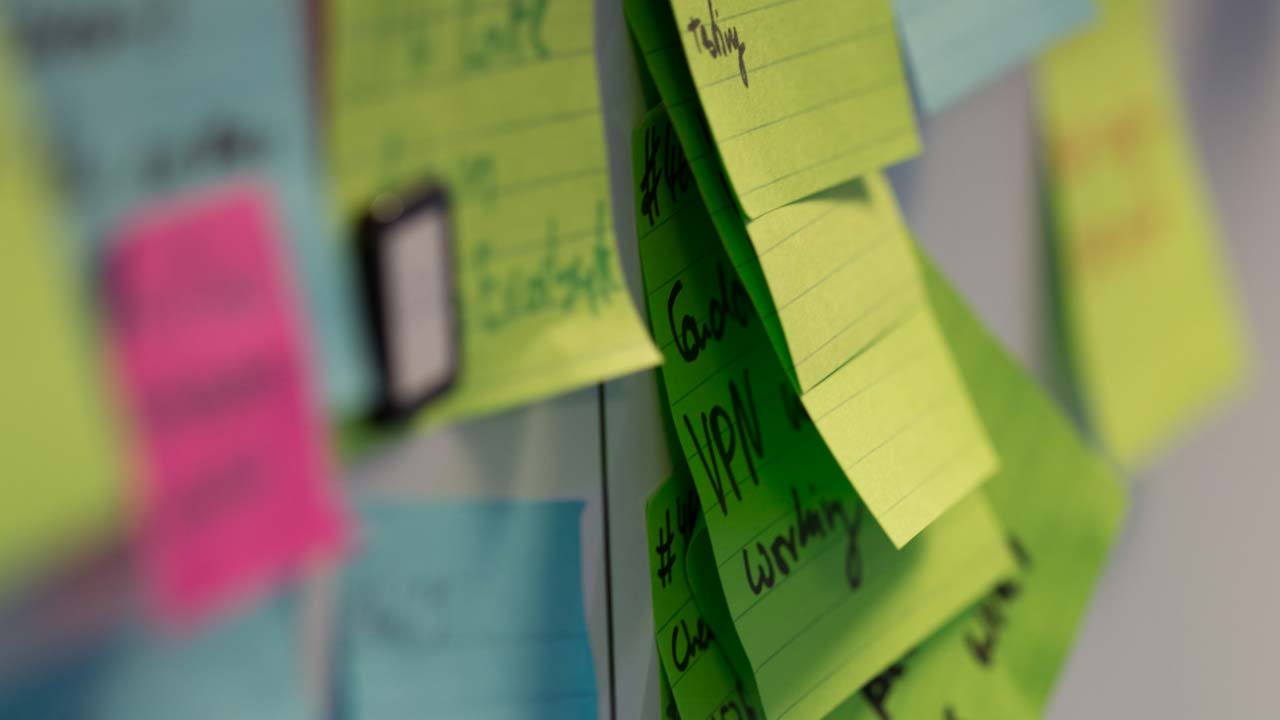Get in touch
“Every day I have an Agile Coach Camp of sorts,” says Ilja Preuß from it-agile. It's one of the many reasons he enjoys working at the Hamburg company, says Preuß. But there weren't just positive things to report at the June meeting of the Agile Usergroup Rhein-Main. During the discussion concerning “The Pain of a self-organized Company,” Preuß described the pain points of an agile company from his individual point of view and offered further subjective impressions concerning developing a company according to democratic principles – and what other companies can learn from it-agile's experience.
According to Preuß there are currently three main topic areas that it-agile has to deal with:
The company, founded in 2005, is one of a steadily growing number of German companies which organize and structure themselves and their work processes according to agile principles. This also distills it-agile’s self-image to a simple formula – when asked to characterize his company, Preuß simply answered “agile”. At the same time the term also describes the core competence of approximately 30 employees and consultants.
Especially the topic “Decisions” made for a lively discussion among the participants of the user group meeting.

For example, one of the techniques that is utilized at it-agile is the “Consultative Individual Decision”. If employees can't achieve a rapid consensus or find a comprise when addressing an open issue, this form of decision making can help find a solution. In this technique an employee is chosen to consult with various employees and, if needed, external experts to help form a decision on a given topic. This decision is then communicated and substantiated to all colleagues. A decision is binding, a veto is not possible. Preuß says that this does not present a problem, though. “We've never had a boycott.” Decisions are always supported by the entire staff, even one or the other employee doesn't agree with the decision or the reasoning behind it. In this context “forgiveness” toward the decision maker is important; according to Preuß, it required quite a bit of practice in the company. It is also interesting to note, says Preuß, that a decider can change his task, if it is necessary in order to reach a decision.
Often a decision of this type is also necessary to resolve a conflict. “Conflicts will always exist,” says Preuß. In any company, even an agile, democratic one. Or, to express the concept using the title of a book by Thomas Robrecht: “Organization is Conflict.”
it-agile also has two external mediators since the beginning of the year, who support employees in resolving conflicts when internal mechanisms are no long sufficient. In any event conflicts are resolved differently than in traditional companies, where supervisors are usually involved, Preuß says. In his company, things are different, he continues: “At it-agile the conflict is resolved directly with the colleague in question.” This is difficult and sometimes frustrating, Preuß concludes.
At it-agile fulltime employees are also shareholders – which means that every employee is also the boss of his or her boss. This structure also for a great range of freedom, but it also creates a high degree of responsibility for every individual. Why, then, even work at it-agile? For many colleagues it's the self-determined work that is a big motivational factor, Preuß says. For him personally it is, among other issues, the regular exchange of ideas with colleagues. “I enjoy it. Every day I have an Agile Coach Camp of sorts.”
But even Preuß needed to become accustomed to the corporate culture after joining the company. When questioned what surprised him the most at it-agile, he answered: “How little paradise it is. It is very tiring sometimes.” In the beginning he also felt that the company needed to change so that he could be happy. Until he realized that he already was.
There are two bits of advice Preuß would give to other companies that want to structure their business along similar lines: “Experiment and don't stew in your own juices.” Companies need to effect change in small, continuous steps, he adds to the first bit of advice. Regarding the second, he thinks it's important to get external help, if needed.

Every company must decide, and far more importantly try, for itself how agile it wants to be and which mechanisms, values and processes work – and which do not. One thing however is certain: With the support of the experts at it-agile, restructuring to an agile company is surely a little easier and therefore has a greater chance of success. it-agile is a pioneering example of how one can breathe life into a truly democratic, agile company through courage, energy, creativity and innovation.
Interested in the topic? Please click here to support Ilja’s book project.